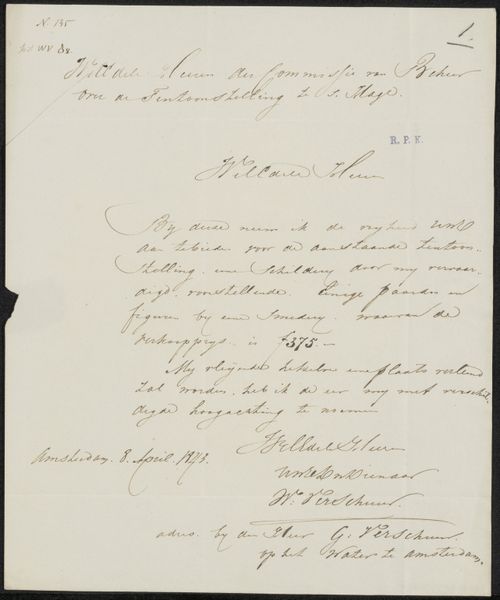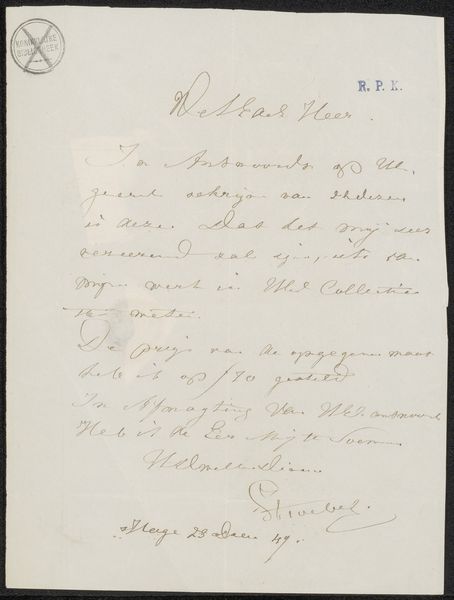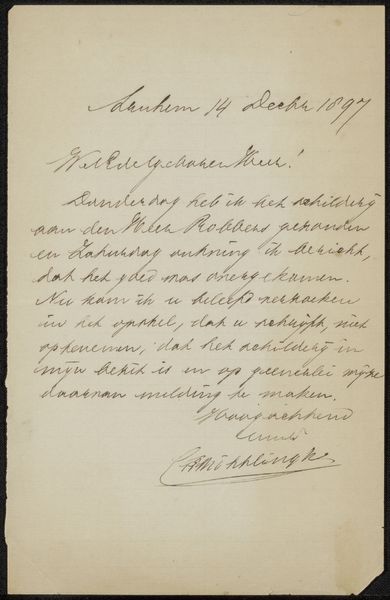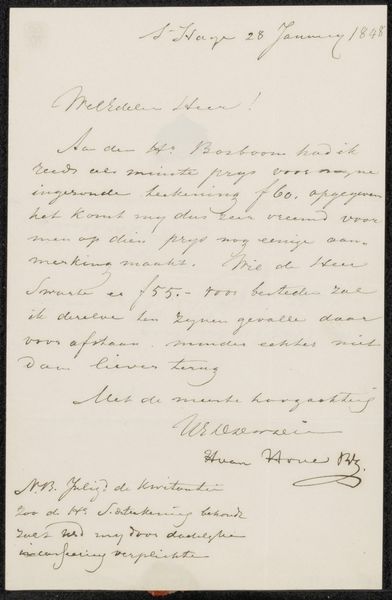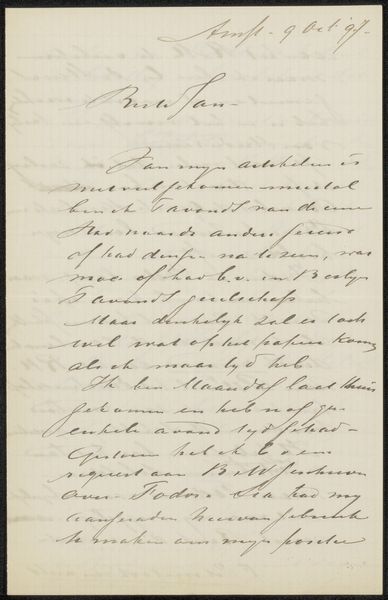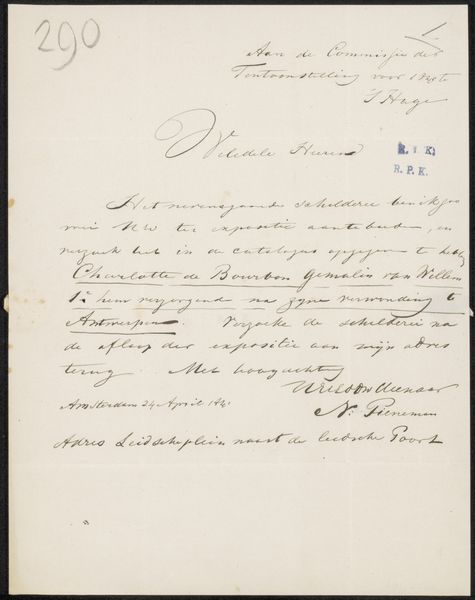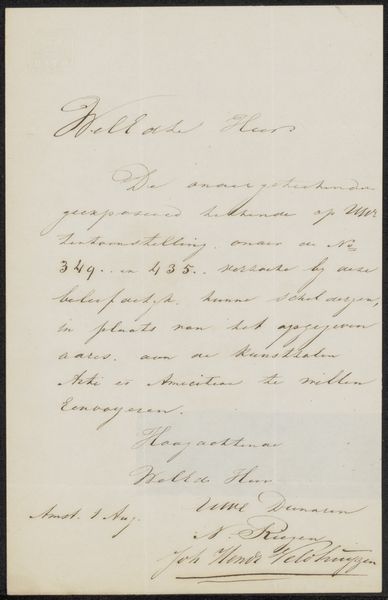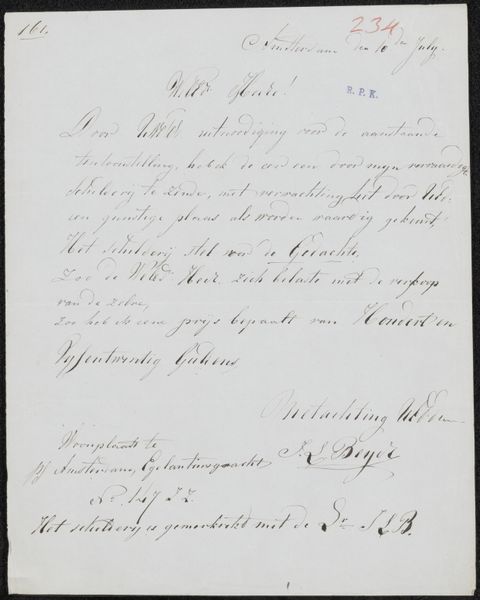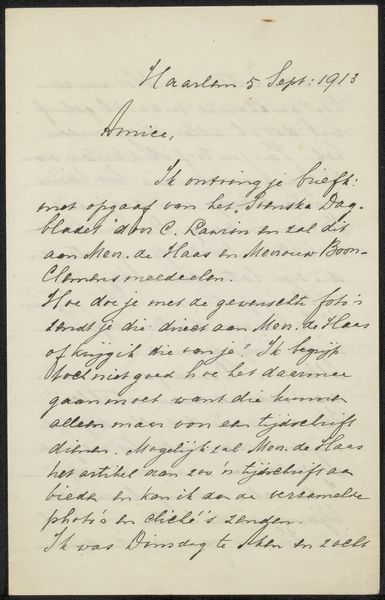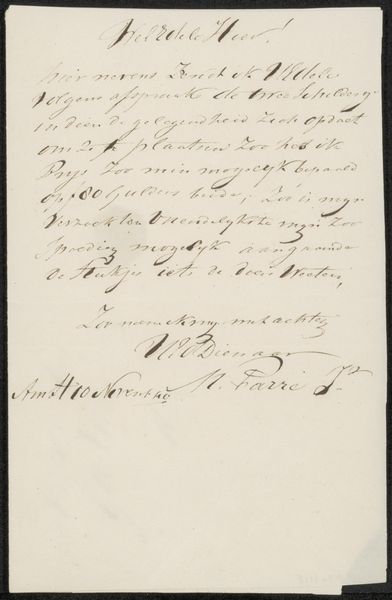
drawing, paper, photography, ink
#
drawing
#
paper
#
photography
#
ink
Copyright: Rijks Museum: Open Domain
Editor: So, here we have Pieter George Westenberg's "Brief aan Alberto Caramelli," thought to be from around 1880. It’s ink and photography on paper. What strikes me is how personal it feels, yet it's behind glass in a museum. What symbols or meanings do you see embedded within it? Curator: The act of writing itself is powerful. Think of letters as little time capsules; each stroke, each word, imbued with the writer’s intent and the recipient’s anticipation. Here, handwriting, personal and revealing, speaks to a connection between two individuals. This script acts almost as a fingerprint in place of a portrait, carrying a visual weight tied to its contents and intention. Editor: That’s interesting, this letter must have represented more than just the message, perhaps a link between writer and receiver. What does it communicate today as a historical piece? Curator: The formality and style of handwriting itself carries symbolic meaning of a certain period. Notice how precise and considered the script is? It hints at a time of ritualized communication, before the ease of digital messaging where there are few of these markers that tell of us as cultural participants. It’s a physical manifestation of their relationship, its continued existence proof of shared cultural touchstones. A relic for later minds to reflect on and hopefully appreciate. Editor: So, its value lies not just in the information conveyed, but as a cultural object representing a specific era and relationship? Curator: Precisely. It serves as a visual record of an exchange. An embodiment of cultural values from the past, informing our present, while acting as a testament for future introspection. Editor: I hadn't thought about handwriting that way before, almost like another language to be interpreted. Thanks, that gave me a lot to consider!
Comments
No comments
Be the first to comment and join the conversation on the ultimate creative platform.


